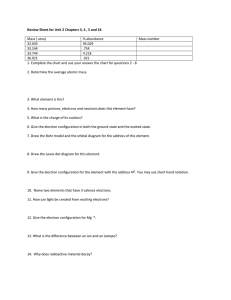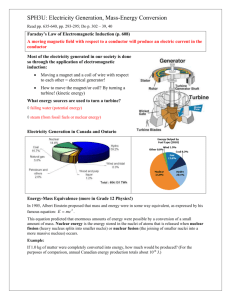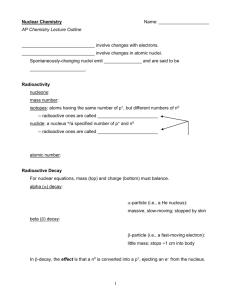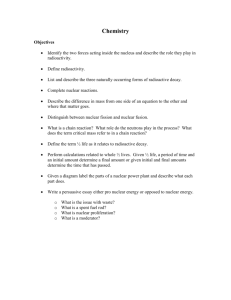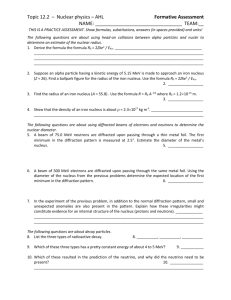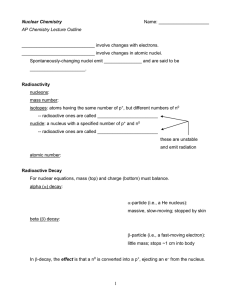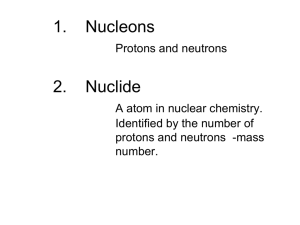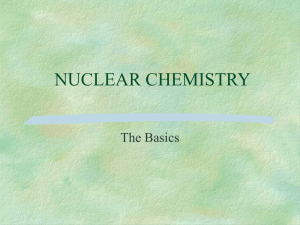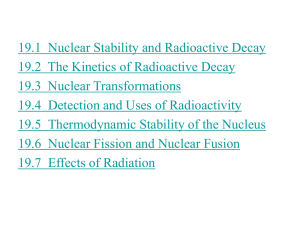Chapter 21- Nuclear Chemistry
advertisement
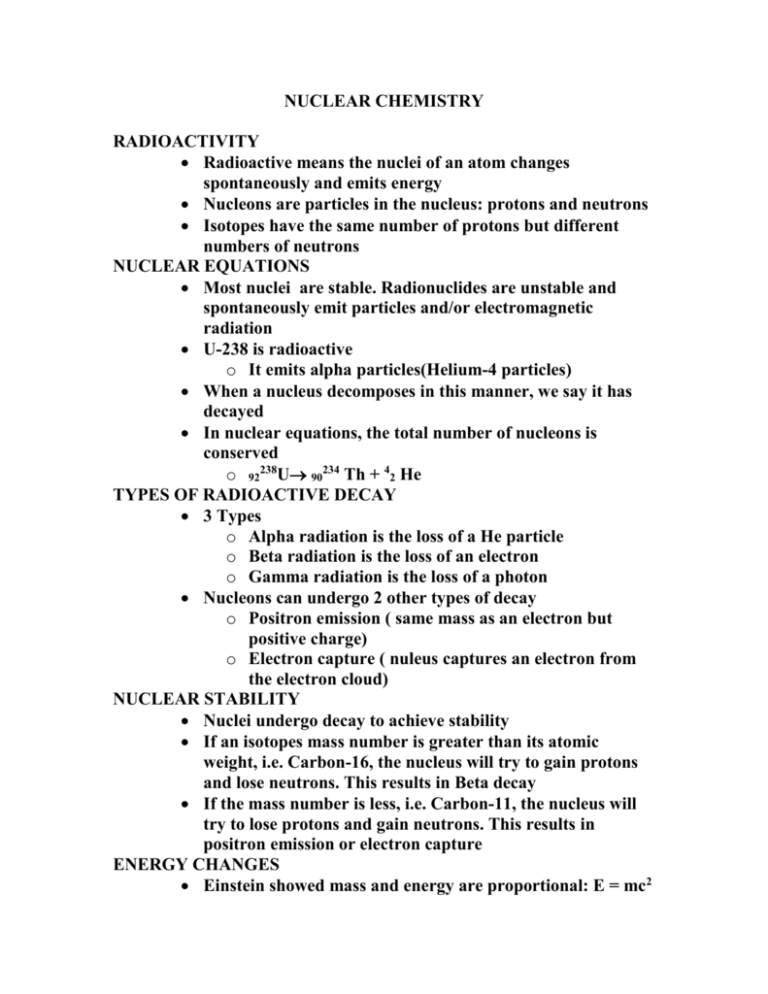
NUCLEAR CHEMISTRY RADIOACTIVITY Radioactive means the nuclei of an atom changes spontaneously and emits energy Nucleons are particles in the nucleus: protons and neutrons Isotopes have the same number of protons but different numbers of neutrons NUCLEAR EQUATIONS Most nuclei are stable. Radionuclides are unstable and spontaneously emit particles and/or electromagnetic radiation U-238 is radioactive o It emits alpha particles(Helium-4 particles) When a nucleus decomposes in this manner, we say it has decayed In nuclear equations, the total number of nucleons is conserved o 92238U 90234 Th + 42 He TYPES OF RADIOACTIVE DECAY 3 Types o Alpha radiation is the loss of a He particle o Beta radiation is the loss of an electron o Gamma radiation is the loss of a photon Nucleons can undergo 2 other types of decay o Positron emission ( same mass as an electron but positive charge) o Electron capture ( nuleus captures an electron from the electron cloud) NUCLEAR STABILITY Nuclei undergo decay to achieve stability If an isotopes mass number is greater than its atomic weight, i.e. Carbon-16, the nucleus will try to gain protons and lose neutrons. This results in Beta decay If the mass number is less, i.e. Carbon-11, the nucleus will try to lose protons and gain neutrons. This results in positron emission or electron capture ENERGY CHANGES Einstein showed mass and energy are proportional: E = mc2 If a system loses mass, it loses energy( exothermic) If a system gains mass, it gains energy ( endothermic) Since c2 is a very large number, small mass changes create large energy changes NUCLEAR BINDING ENERGY The mass of a nucleus is less than the mass of its nucleons This is termed mass defect Nuclear binding energy is the energy required to separate a nucleus into nucleons The binding energy is related to the mass defect, E = mc2 HALF-LIFE Radioactive decay is a first order process: rate = kN Each isotope has a characteristic half-life Half-life is not affected by temperature, pressure or chemical composition Half lives range from seconds to millions of years


